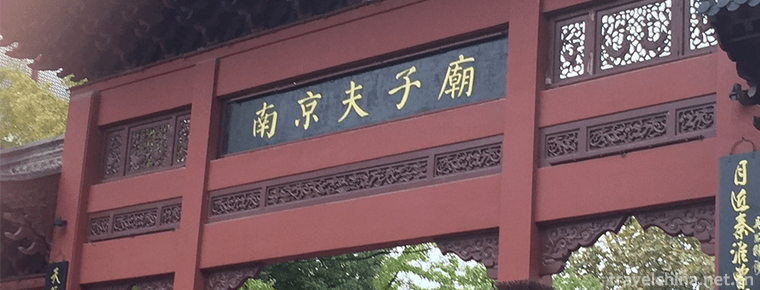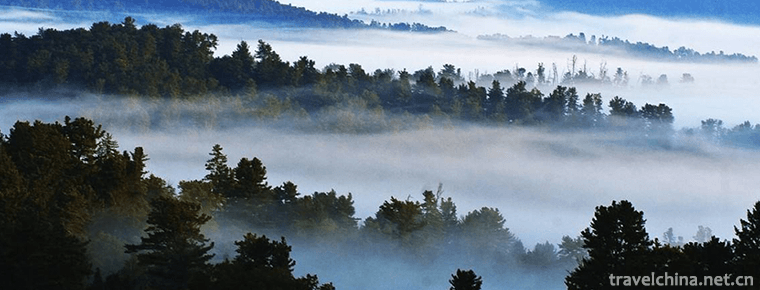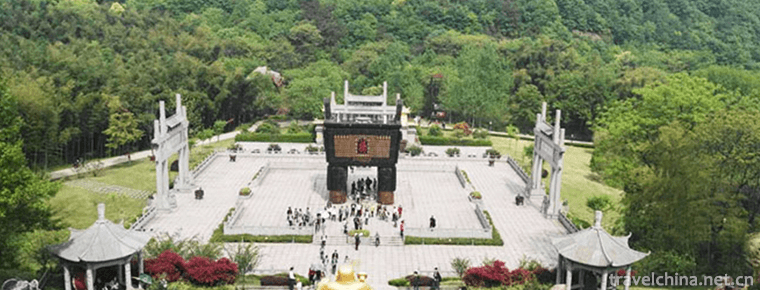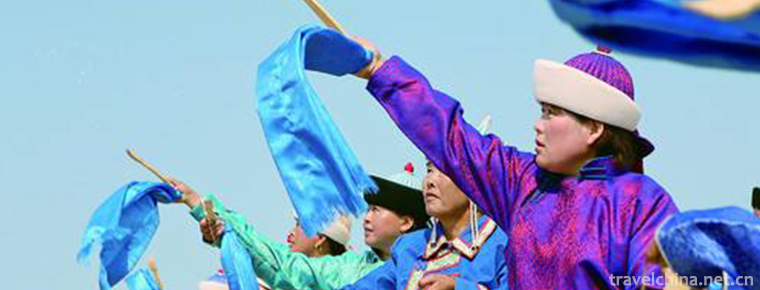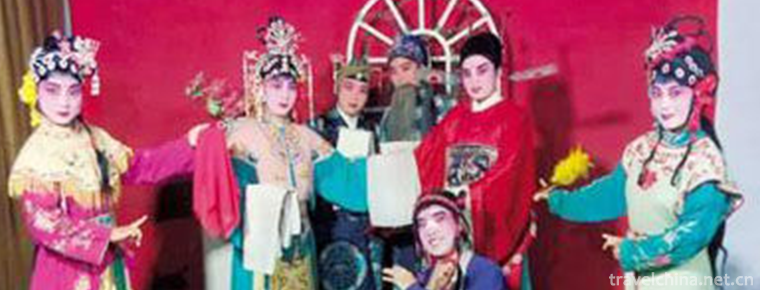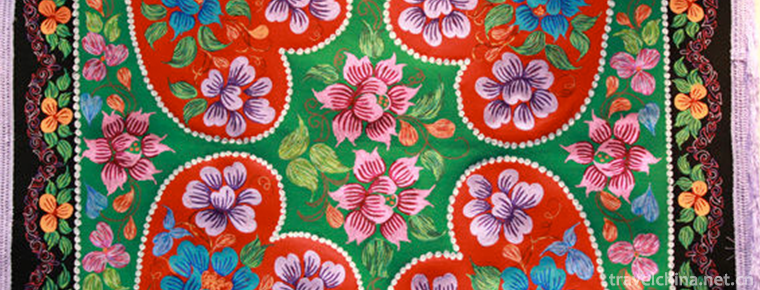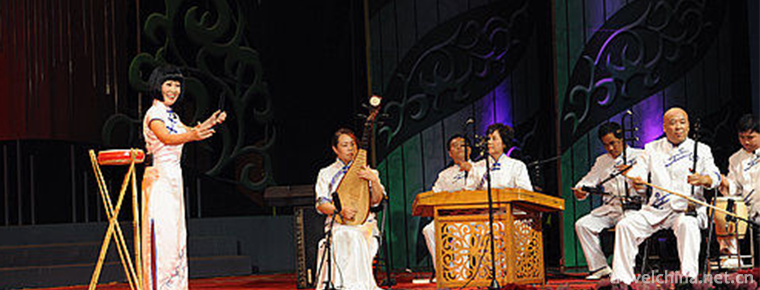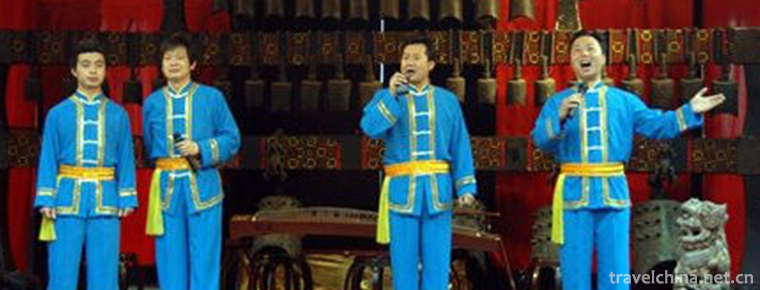Zhujiajiao Ancient Town
Zhujiajiao Ancient Town
Zhujiajiao Town, which belongs to Qingpu District of Shanghai, is located in the West and south of Qingpu District, close to Dianshan Lake Scenic Area. It is bounded by Daying in the East and Huancheng in the west, Dianshan Lake in the West and Dianshan Lake in the sightseeing park in the west, Shenxiang Town in the South (merged with it in 2001), and Dianshan Lake Town in Kunshan City, Jiangsu Province, in the north.
Zhujiajiao Town is situated between 30 31 north latitude and 120 121 East longitude. It is 6 kilometers east of Qingpu Town and 48 kilometers east of central Shanghai. National Highway 318 runs through the town. The total area of the town is 138 square kilometers (aquifer). In 2013, the GNP reached 6.34 billion yuan.
In 1991, it was listed as one of the four famous historical and cultural towns in Shanghai. In 2007, it was named the third batch of famous historical and cultural towns (villages) in China.
On October 14, 2016, Zhujiajiao Town, Qingpu District, Shanghai, was named the first batch of towns with Chinese characteristics by the Ministry of Housing, Urban and Rural Construction. On May 24, 2018, Zhujiajiao Town was selected as the top 50 small towns with the most beautiful characteristics.
Historical evolution
About 7000 years ago, the land of Zhujiajiao was discovered at the bottom of Dianshan Lake. There are relics from Neolithic Age to the Spring and Autumn Period and the Warring States Period.
Before the Tang Dynasty, they were respectively subordinated to Quan County, Lou County, Jiaxing County, Xinyi County and Kunshan County.
Tang Tianbao Decade (751) belongs to Huating County and Kunshan County.
During the Song and Yuan Dynasties, Zhujiajiao Town formed a small market town, named Zhujiacun.
From the beginning of the Yuan Dynasty to the 29th year of the Yuan Dynasty (1292), it belongs to Huating County, Shanghai County and Kunshan County.
Jiajing in Ming Dynasty (1542) belongs to Qingpu County and Kunshan County.
In the forty years of Wanli (1612) in Ming Dynasty, Zhu Jia competed as a big town because of convenient water transportation and prosperous commerce. Zhujiacun was renamed Zhujie Pavilion, also known as Zhuli and Zhuxi, commonly known as Jiaoli.
In the fifty-second year of Emperor Kangxi of the Qing Dynasty (1713), Zhuli was divided into five maps: the second map of 57 districts, the eleventh map and the twenty-five map of one district.
At the end of the Qing Dynasty, local self-consistency was implemented, which was called Zhuwei Autonomous Region, and it was one of the sixteen autonomous regions under the jurisdiction of Qingpu County, Jiangsu Province.
In 1910, Xuantong reigned as Zhuji Autonomous Region, which was one of the 16 autonomous regions under the jurisdiction of Qingpu County.
In the early years of the Republic of China, it was still called Zhuji City, with a municipal office.
In the sixteenth year of the Republic of China (1927), it was changed to the Zhuji Municipal Administrative Bureau.
In March of the eighteenth year of the Republic of China (1929), the administrative bureau was abolished, still known as Zhuji District, which is the second of the thirteen districts in Qingpu County.
In the twentieth year of the Republic of China (1931), the Second District Office was rebuilt and listed as one of the eight district offices in Qingpu County.
In 1940, it belonged to the Sixth District of Qingpu County in Wangpu County. It has jurisdiction over the three towns of Zhudong, Zhuxi and Zhubei, and the six townships of Xuejian, Zhenwu, Zhangdian, Zhangding, Anzhuang and Shenxiang.
In September 1945, the Second District Office was restored and three towns and six townships were still under its jurisdiction.
In the thirty-fifth year of the Republic of China (1946), the district office was abolished and renamed the district office. It was under the jurisdiction of one town and two townships. The former three townships of Zhudong, Zhuxi, Zhubei and Zhangding were merged into one town, named Zhuxi Township; Xuejian and Anzhuang townships were merged into one town, named Anzhuang Township; Shenxiang, Jiwo and Zhangdian townships were merged into one town, named Jiwo Township.
In February 1948, in the thirty-seventh year of the Republic of China, townships were merged. There were two districts in Qingdong (Qinglong) and Qingxi (Diansi), and Zhuxi Township, Anzhuang Township and Zhenwo Township were all located in Qingxi District.
On May 14, 1949, Zhujiajiao was liberated all over the country, and Zhujiajiao City, Qingpu County, Songjiang Special Zone of the Southern Jiangsu Administrative Office, was established. It has jurisdiction over Shenxiang, Wanlong, Jiwo, Xuejian and Zhujiajiao Towns. Originally belonging to Kunshan County, Dongjing Pavilion, Zhongjing Pavilion and Xijing Pavilion are divided into Zhujiajiao Town.
In April 1951, the municipal system was abolished and Zhujiajiao District was established. Three villages were divided from Shenxiang and Xuejian townships under their jurisdiction to form Anzhuang Township, which became five townships and one town.
In 1954, Tianxin Township, originally Songjiang County, was assigned to Zhujiajiao District. Meanwhile, Zhujiajiajiajiao Township of Wanlong Township was assigned to Chengnan Township of Chengxiang District, and Nanheng Village of Jinwo Township was assigned to Tianma Township of Songjiang County. Shenxiang, Anzhuang and Jiwo townships are divided into Liantang District, Wanlong, Xuejian and Tianxin townships into Chengxiang District. To rebuild the system of Zhujiajiao Town, directly under the county leadership.
In 1955, Zhujiajiao District was re-established, and all the six townships originally designated were regrouped. Yingzhong, Wanshou and Chengnan townships in Chengxiang District were regrouped under the jurisdiction of Zhujiajiao District. Zhujiajiao Town is still a county town. The people's government of Zhujiajiao Town has been renamed the Town People's Committee, and its structure has remained unchanged.
In 1957, the Wanlong tablet of Yelong Township was assigned to Zhujiajiao Town.
In September 1958, Zhujiajiao Town and Yelong Township merged to form the Red Banner People's Commune.
In 1959, it was renamed Zhujiajiao People's Commune.
In August 1961, Zhujiajiao Commune set up a town working group to take charge of town work and prepare for the division of town communes.
In February 1962, the town society was officially separated. Zhujiajiao Town was restored to a county town and the people's government of the town was established.
In 1968, the town government was renamed the Town Revolutionary Committee.
In 1980, the name of the people's government of the town was restored.
In 1991, Zhujiajiao Town and Zhujiajiao Township merged into a county-owned town.
In 2000, the administrative division of Qingpu District was adjusted and merged with Shenxiang Town to form a new town, Zhujiajiajiao Central Town.
geographical environment
Location context
Zhujiajiao Town is situated between 30-31 degrees in the north latitude and 120-121 degrees in the East longitude, beside Dianshan Lake, bordering Yingpu Street and Xiayang Street in the east, Liantang Town, Songjiang Science and Technology Park and Sheshan Town in the south, Jinze Town in the west, and Dianshan Lake Town in Kunshan City, Jiangsu Province, in the north. The total area is 138 square kilometers (including 46 square kilometers of Dianshan Lake).
Topography and topography
Zhujiajiao Town is located in Qingpu District, which belongs to the alluvial plain of the Yangtze River. Its terrain is flat and its average elevation is between 2.8 m and 3.5 M.
climatic conditions
The temperature of Zhujiajiao is almost the same as that of Shanghai. It belongs to the north subtropical monsoon climate zone and is a typical marine climate. Four seasons are clear, rainwater is abundant, frost-free period is long, sunshine is abundant, average temperature is 15.5 degrees Celsius, annual frost-free period is about 235 days, annual sunshine is about 137 days, annual precipitation is about 1100 millimeters.
Population nationality
population
As of 2014, there were 20 787 households in Zhujiajiao Town, with a total population of 59 759, including 29 387 males and 30 372 females, 16 558 elderly people over 60 years old and 17 988 agricultural people, accounting for 30%. At the end of the year, 49 038 migrants came to Shanghai.
Nation
According to the statistics of ethnic minorities in 2012, there are 31 ethnic minorities in Zhujiajiao Town, including Zhuang, Miao and Tujia. The number of ethnic minorities, including immigrants, is more than 1100.
natural resources
The natural resources of Zhujiajiao Town are mainly concentrated in Dianshan Lake, which is the only freshwater lake in Shanghai with an area of 62.0 square kilometers, of which 47.5 square kilometers are located in Qingpu. Qingpu territory includes four major domestic fishes, Cyprinus carpio, bream, bream, crucian carp, Dianshan Lake silver carp, as well as river shrimp, Eriocheir sinensis, turtle, snail clam, yellow clam and mussel. The imported anchovy and tilapia were also bred locally.
traffic
Highway
Zhujiajiao Town, located at the junction of Shanghai and Jiangsu Province, is an important passage from Shanghai to Jiangsu and Zhejiang. There are 318 National Highway, Shanghai-Qingping Highway and Shenzhen-Brick Highway in the East-West direction, Zhufeng Highway in the North-South direction, Tongsan Highway in the south, Shanghai-Hangzhou Highway in the south, Shanghai-Nanjing Highway in the north and Village Road in the village.
waterway
Zhujiajiajiao waterway traffic across the Dianpu River; even though there are road-blocking ports, Xidaying Port and Zhusi River, they are all grade 6 waterways, which can pass 100-500 tons of ships, directly to the Huangpu River and connect with the Taihu River system.
Scenic spot
Overview
Zhujiajiao Town has abundant tourism resources, and the Shanghai Sports Ground on Dianshan Lake is an activity center with modern international water facilities; the Oriental Green Boat is an off-campus activity camp for teenagers in Shanghai; the Shanghai Sun Island International Club and the Shanghai International Golf and Country Club are entertainment tourism bases integrating business, vacation and leisure; and the ancient town has developed and opened lesson gardens and gardens. More than 20 scenic spots such as Daqing Post Office.
Nine old streets in ancient town are built along the riverside with more than 1000 houses. The North Street, also known as "First Line Street", is the most complete preserved first street of Ming and Qing architecture in the suburbs of Shanghai. It starts from the Free Bridge in the East and reaches more than 300 meters west to Meizhou Lane. It is a typical old street in the south of the Yangtze River.
The famous mountain lake consists of Dianshan Lake and the "nine peaks" - the Dianshan; the famous garden has the class garden and the Zhuxi garden; the temple has Zhujiajue Town God's Temple and Guan Wang Temple (the newspaper country Temple); the famous street has North Street, also known as "the first line Street", is the most well preserved Ming and Qing building first street in the outskirts of Shanghai; the famous bridge has the release bridge, the Tai'an bridge (He Jiaqiao), the Ping Qiao (Qi Jiaqiao), the Fuxing Bridge (West Gate). Bridge, Yongfeng Bridge (Yongfeng Bridge) and Langqiao (Huimin Bridge); Famous shops include Handalong Sauce Garden, Yichengtai Sauce Garden, Tongtian and Guoyao Name and Club Teahouse; Scenic sites include 12 scenic spots of Tsinghua Pavilion - Yuanjin Zen Garden, 12 scenic spots of Tsinghua Pavilion - Cimen Temple, Xishi Hall, "Sansi Fishing House" and Wang Miao Memorial Hall, Liuyazi Villa - Fulu Sui, etc.
Tsz Gate Temple
Cimen Temple, the "Cimen Jiege Pavilion" in the twelve scenes of Tsinghua Pavilion, is a famous ancient temple in Zhujiajiajiao. It is situated at the side of Free Life Bridge and Caogang River. It was first built between Yuan Dynasty and Zheng Dynasty and was originally called "Mingyuan Ancient Temple". In the five years of Longqing, the foot monk Zhanyin raised money to rebuild the Daxiong Palace, which is called the New Palace by the people.
In the thirty-ninth year of Wanli in the Ming Dynasty, Rongzhi Temple was named "Protecting the Nation Mingyuan Cimen Temple", and a Tibetan Master Wusi was given a sutra of twenty. For this reason, Guanyin Pavilion and Tibetan Sutra Pavilion were specially built in the temple to treasure the two treasures of the imperial town temple. In the first year of Ming Chong Frame (1628), a bell tower was built on the left of the Hall. The building is six feet tall and weighs two thousand five hundred kilograms.
After several wars, Cimen Temple gradually declined. During the Republic of China, the temple was transformed into a hospital. In the late 1940s, there were only halls, bell towers and other buildings. In the early 1950s, the county people's hospital was built at the original temple site. It is now the inpatient department of Zhujiajiao People's Hospital. There are only one ancient ginkgo biloba of male and female on the old site.
Tsz Mun Street
Now Cimen Street is rebuilt on the original basis. It is the backyard of Dalong Sauce Garden, a hundred-year-old shop with Wenchang Pavilion, Jiubei Corridor and Longquan Land. Now it is a commercial city integrating commerce, tourism and entertainment.
Zhuxi Garden
Zhuxi Garden is located at the entrance of 318 National Highway in the eastern part of the town. Built after liberation, it is another garden in Zhujiajiajiao Town besides Xijing Street. Zhuxi Garden, formerly known as Gongqing Park, was built in 1956. Cai's cemetery, originally a rich family in town, covers an area of more than 70 mu. There are ponds and rivers in it. The cemetery is divided into three bunkers and connected by bridges. Cemetery planted pine, cypress, plum, elm, brown, iron trees and other precious trees and flowers.
Class Garden
Course Planting Garden is located at 147 Xijing Street, Zhenxi. It is a manor-style garden building. Its owner's name is Ma, Weipi, and it's a farm nursery. The garden takes the meaning of "ploughing and reading", named "lesson planting", commonly known as Majia Garden. The first year of the Republic of China (1912) was built, which lasted 15 years and cost 300,000 yuan. The garden sits West to east, with the main wall facing Xijing Street and Lane. Along the river there are boats, river ports and stone barges. The whole manor consists of three parts: hall area, pseudo-mountain area and garden area. More than 200 buildings cover 53,000 square meters.
The north is the hall area and the south is the sham mountain area. The five-storey roof of the Xiaoyao Building in the rockery area overlooks the whole town. Inside the stele gallery, there are several inscriptions such as "Plum Blossom Poetry" written by Zhu Zhishan, one of the four great talents in the south of the Yangtze River in the Ming Dynasty. There are 12 inscriptions of "You Xishan Poetry", "Tang Yin" and "Zhou Tianyu" in Wenhui Ming.
West of Lotus Pool is a garden area, also known as Daoxiang Village. There are dozens of acres of various flowers and trees; in the north there are more than nine farming halls; in the southwest corner there are small tourist areas, such as small rockery, lotus pond, Jiuquqiao and hanging Lion Pavilion upside down.
Tai'an Bridge
Tai'an Bridge, commonly known as He Jiaqiao, was built in the twelve years of Wanli in Ming Dynasty (1584). It is a single-hole arch stone bridge, located in front of the famous Cha Yuanjin Chanyuan in the mouth of Caogang River. High and steep, is the steepest stone arch bridge in the town, with two flagpole stones erected at the foot of the bridge, which are used for suspension street lamps. It is a beacon for ships and a "flying dolomite" relief on the blue stone handrails on both sides of the bridge.
Celebrities in the Qing Dynasty once wrote poems: "The sun set and the pond faded away in the light of the moon; the fishing flute was in Xidong, Pufan was shaking in the summer, and the banana shirt was short in the wind; the old temple was connected by a bridge when walking alone in the cool evening." Here we write "Ancient Temple is connected by a bridge", "Ancient Temple" is the Yuanlu Chan Temple, and "One Bridge" is the Tai'an Bridge.
Yuan Jin Temple
Yuanjin Zen Temple is one of the twelve scenic spots of Tsinghua Pavilion. It was built from Yuan Dynasty to Zhengnian (1341). It is a line of Zen Cao Xi and Songwu Mingsha. It is also known as "Niangniang Temple" because of the worship of Guanyin Bodhisattva in the temple. It is located in the north of Caogang and east of Zhuxi.
Zen temple is an important cultural relic storage center in history. Since Ming and Qing Dynasties, many scholars have come to the temple to admire their names. Wang Shimin, Wang Yuanqi, Wang Chang, Liu Yong, Zheng Banqiao, Qian Daxin, Dong Qichang, Xu Qian and many other celebrities have visited the Zen Temple and left their poems, paintings and ink marks. Among them, Wang Chang also wrote inscriptions for the Buddhist temple, and deposited some of his books on bookboards and many other relics.
In the fifteen years of Shunzhi in Qing Dynasty (1658), the monastery was enlarged.












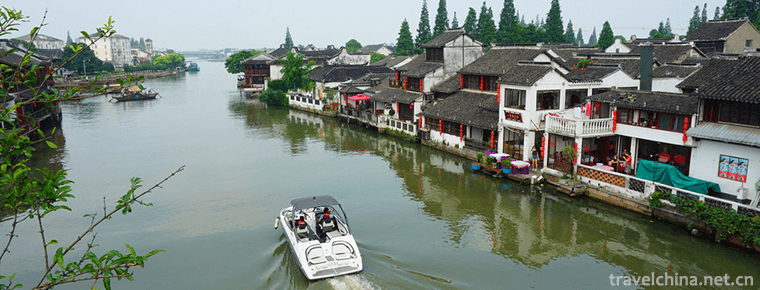
-
Confucius Temple
Nanjing Confucius Temple is located in Gongyuan Street on the North Bank of Qinhuai River in Qinhuai District of Nanjing City and west of Jiangnan Gongyuan Temple, namely Nanjing Confucius Temple.
Views: 206 Time 2018-12-06 -
Shangganling Xishui National Forest Park
Shangganling Xishui National Forest Park combines the strong local flavor and exotic style with the elegance of "paradise". It has both unique natural landscape and distinctive humanistic la.
Views: 383 Time 2018-12-19 -
Malenqi Peak Forest Tourist Area
Located at the junction of Tongling, Nanling and Fanchang counties on the South Bank of the Yangtze River, Maren Qifeng scenic spot is located in the middle of the southern Anhui tourism belt.
Views: 202 Time 2019-02-06 -
Bogda Ula Festival
The sacrifice of Bogdahura (Shenshan) is one of the earliest forms of Mongolian creative culture in China. It is the product of national culture, which is formed by historical accumulation and plurali.
Views: 91 Time 2019-04-04 -
Haha Opera
Haha Opera, also known as Liuzi Opera and Drinking Opera, is a local opera originated from the folk in Hebei Province. It is the first national intangible cultural heritage.
Views: 210 Time 2019-05-02 -
Kazakh felt embroidery and cloth embroidery
Kazakh folk traditional felt embroidery and cloth embroidery handicraft are mainly spread in Xinjiang Kazakh soft residential areas, such as the Sixth Division Red Banner Farm.
Views: 339 Time 2019-05-02 -
Lishui drum words
Lishui Drum Ci is a popular rap art in Liandu and its surrounding areas in Lishui City, Zhejiang Province. Lishui Drum Ci originated from the Tang Dynasty. During the reign of Emperor Li Shimin, it wa.
Views: 335 Time 2019-05-13 -
Eyebrow household
Eyebrow households, distributed in Shanxi, Shanxi, Shaanxi, Gansu, Western Henan and other provinces, also known as "Eyebrow Shao" or "confusion", are named for their euphemistic m.
Views: 87 Time 2019-05-31 -
Qingxu Caimen Building
Qingxu Caimen Tower is a local traditional handicraft in Qingxu County, Shanxi Province. Xu Caimen Tower in Qing Dynasty is said to have originated in Tang Dynasty. During the festival, people gathere.
Views: 145 Time 2019-06-11 -
Sanxianshu
Sanxianshu, also known as Qianzi Shu and Leg Blackboard Shu, is an ancient traditional rap art formed in Nanyang, Henan Province. It has a history of more than 250 years. It is named for its main acco.
Views: 116 Time 2019-06-12 -
Xiushan Folk Song
Xiushan folk song is the folk song of Xiushan Tujia and Miao Autonomous County. Folk songs are closely related to the people's lives of all ethnic groups in Xiushan. Through compiling folk songs, the .
Views: 120 Time 2019-07-08 -
Beijing Language and Culture University
Beijing Language and Culture University, established in 1962 under the personal care of Premier Zhou Enlai, is a university directly under the Ministry of Education of China. In June 1964, it was name.
Views: 214 Time 2019-09-22
